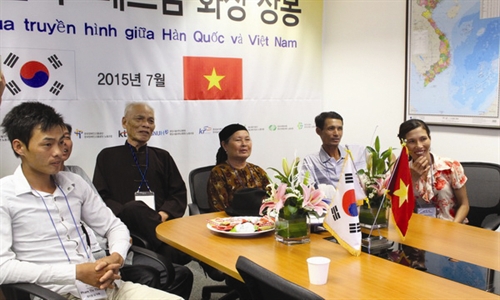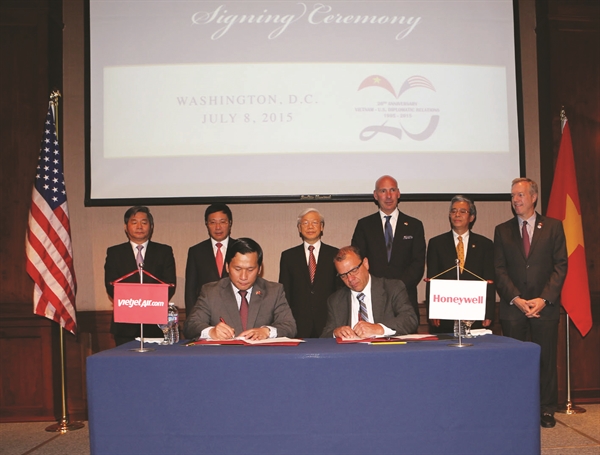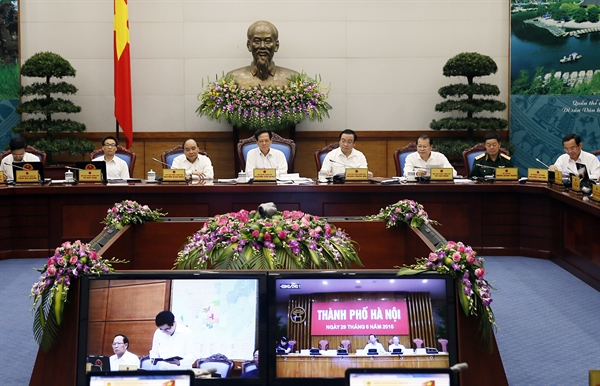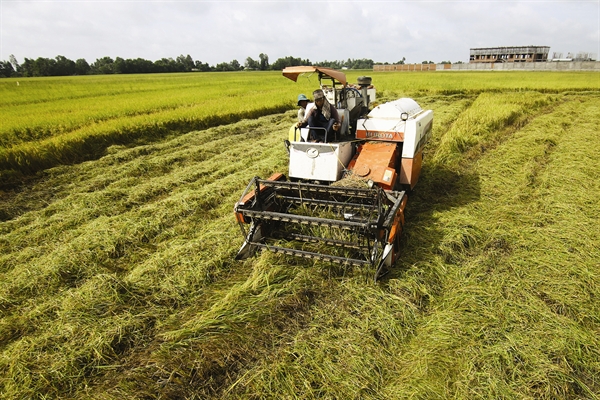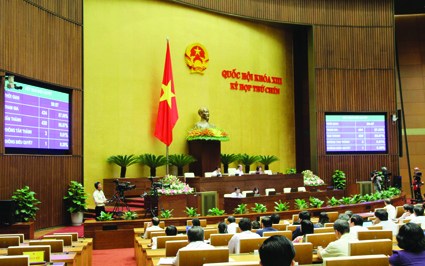 The recently passed Law on Marine and Island Resources and Environment provides a new method of managing marine and island resources in order to promote effective and sustainable exploitation and use of these resources and protect the marine environment.
The recently passed Law on Marine and Island Resources and Environment provides a new method of managing marine and island resources in order to promote effective and sustainable exploitation and use of these resources and protect the marine environment.
Vietnam Law and Legal Forum talks with Deputy Director of the Vietnam Administration of Seas and Islands Pham Ngoc Son about the Law.
What are purposes and significance of the Law on Marine and Island Resources and Environment?
Vietnam has a long coastline of over 3,260 km and an exclusive economic zone and continental shelf three times larger than its land area, which is home to important ecosystems and rich resources. Over the past years, the management, exploitation and use of marine and island resources have greatly contributed to the national socio-economic development. However, the management of marine and island resources still mainly relies on the sector-based approach, while the exploitation and use have not yet been based on a comprehensive analysis of functions of each marine area. There remains a lack of harmony of benefits of stakeholders in the exploitation and use of resources in the same marine area. While activities on the sea are interrelated and interacting, the sector-based management, in some cases, seeks to maximize benefits for individual sectors without considering the exploitation, use and protection of marine and island resources and environment as a whole. Therefore, this management approach has affected overall development and caused some problems such as deterioration of resources, especially renewable ones, environmental pollution, serious ecosystem damage, and depletion of living resources.
Fully aware of these problems, on March 6, 2009, the Government issued Decree No. 25/2009/ND-CP on integrated management of natural resources and environmental protection of the sea and islands. After six years of implementation, this Decree has revealed limitations. It has not yet fully institutionalized all contents of integrated management and, as a sub-law document, cannot direct and coordinate resource management, exploitation and use activities prescribed in specialized laws.
In order to continue building and improving the legal system on the sea and raising the effectiveness of the integrated management, the enactment of a law on marine and island resources and environment is quite necessary.
The Law on Marine and Island Resources and Environment was passed by the National Assembly on the 25th of June this year and will take effect on the 1st of July next year.
Once the Law comes into force, it will create a breakthrough in the management of marine resources and environmental protection of the sea and islands. The Law will help resolve conflicts of interest arising from the sector-based management and ensure reasonable and efficient use of resources and protection of the environment and ecosystems. This is in line with the goal set forth in the Vietnam Marine Strategy to turn Vietnam into a strong and wealthy sea-based nation.
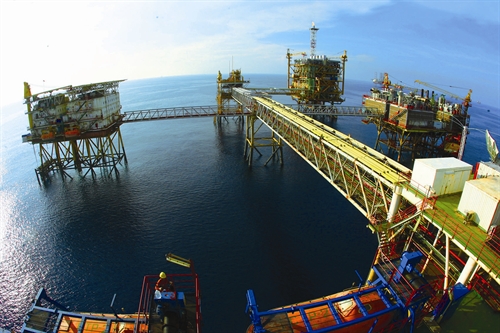 |
| Central Technology Platform No. 2 at Bach Ho (White Tiger) oil field of Vietsovpetro Joint Venture __Photo: Huy Hung/VNA |
Could you elaborate on the integrated resource management introduced in the Law?
The integrated approach to management of marine and island resources was put forward at a time when the world was confronted with many unpredictable environmental challenges. Such approach adopted a deeper and wider vision for working out solutions to achieving sea and ocean management goals. In 1965, the first-ever integrated coastal zone management program in the world was launched in the US. In 1972, the US passed the Integrated Coastal Zone Management Act. By the 1990s, this approach had become popular almost around the world. At the 1992 Earth Summit in Rio de Janeiro, Brazil, it was adopted as an important part of the United Nations Agenda 21 on Environment and Development. By 2002, as many as 622 integrated costal zone management programs and projects had been carried out in 145 countries and territories. This approach has been so far applied effectively in many coastal countries, such as the US, Canada, China, Japan, South Korea, Indonesia, South Africa, Australia and EU member countries.
In practice, Vietnam has applied this management approach in the northern central and central coastal provinces since 2007.
Integrated management is an approach to management that does not supplant the sector-based management but coordinates sector-based management activities for the purpose of managing more effectively the investigation, exploration, exploitation and use of marine and island resources. It plays the role of regulating human activities so as to protect the functions and structures of ecosystems in their entirety. As a result, the ecosystem productivity will be maintained and increased, marine resources be conserved and the marine environment be protected. This approach is also aimed at harmonizing the benefits of stakeholders in the exploitation and use of marine resources and protection of the marine environment.
Integrated management does not only help resolve conflicts of interest arising from the sector-based management but also unify activities of management of marine and island resources and environment from the central to local level to facilitate sustainable development of the sea and islands.
The Law on Marine and Island Resources and Environment has been built based on international experiences and domestic conditions as well. It provides mainly for tools, mechanisms and policies for inter-sectoral and inter-regional coordination, including strategies, master plans, programs, zoning, information and data systems. This Law, the Law of the Sea of Vietnam and the Law on Environmental Protection will form a complete legal system for integrated management of marine and island resources and environment.
The Law touches upon many fresh issues, such as ecosystem approach, people’s right of access to the sea, coastal protection corridor. Would you expound these issues?
The ecosystem approach is the primary principle in the integrated management of marine and island resources. It aims to ensure marine and island resources are exploited and used in a manner suitable to the functions of each marine area and within the load-bearing limit of the marine and island environment and ecosystems.
Guarantee of the people’s right of access to the sea is another important principle that ensures harmony of benefits of stakeholders in the exploitation and use of marine resources.
Coast protection corridor is a coastal land strip established in areas where it is necessary to protect ecosystems, conserve the value of ecosystem services and natural landscapes, minimize coastal landslides, respond to climate change and sea level rise, and guarantee people’s right of access to the sea.
The delineation of areas for exploitation and use of coastal resources must be based on the principle of entirety and harmony of exploitation and use needs and requirements of protection of resources, environment and ecosystems. It must also pay attention to the harmony of short-term and long-term benefits of resource users and interests of the State and local communities, giving preference to long-term and community interests. Such zoning must also guarantee people’s right of access to the sea and ensure the national defense, security and navigational safety.
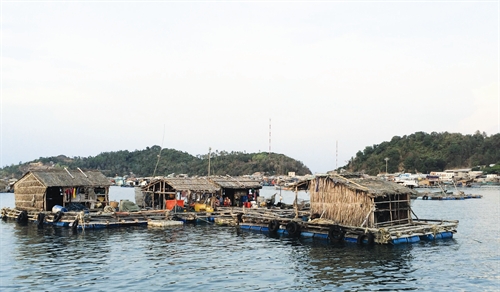 |
| Fishermen in Lai Son island, Kien Hai district, Kien Giang province, earn high incomes from caged fish rearing __Photo: Le Sen/VNA |
Marine environment pollution has so far drawn great public concern. How does the Law deal with this issue?
The Law on Marine and Island Resources and Environment focuses on environment protection issues specific to the sea. It clearly states that environmental protection activities must comply with relevant laws and ensure conformity with this Law. Particularly, the Law deals with several issues.
The first issue is control of marine and island environment pollution. The Law provides principles and contents of control of marine and island environment pollution. For effective pollution control, marine and island environment pollution risks are divided into different levels, and areas prone to pollution risks are classified into areas prone to low, medium, high and very high risks. The Ministry of Natural Resources and Environment and related ministries, agencies and coastal localities are responsible for drawing a map of these areas.
The second issue is response to oil and toxic chemical spills at sea.
Oil and toxic chemical spills at sea are regarded as environmental incidents. The Law on Environmental Protection enacted in 2014 has a separate section dealing with the prevention, response to, and remedy of environmental incidents. Therefore, Clause 8, Article 52 of the Law on Marine and Island Resources and Environment states: “The prevention and remedy of oil and toxic chemical spills at sea must comply with the law on environmental protection and other relevant laws.”
The Law only touches upon some issues specific to coping with oil and toxic chemical spills at sea such as decentralization of the responsibility to handle these incidents; identification and notification of restricted-operation areas; and suspension of the operation of incident-causing facilities. The Law assigns the Prime Minister to issue a Regulation on this issue.
Dumping at sea is another new issue regulated by the Law to meet the requirements of reality in conformity with international treaties. The Law sets forth conditions for dumping, grant of dumping permits, and substances and materials allowed to be dumped. It also regulates the dumping outside Vietnam’s sea areas which causes damage to the country’s marine and island resources and environment.
To protect the marine environment, the Law requires sea areas reserved for dumping comply with master plans on use of sea areas and sustainable exploitation and use of coastal resources. The Government is assigned to draw up the list of matters and substances allowed to be dumped at sea.
The Law allows provincial-level People’s Committees of coastal localities to grant dumping permits for their coastal areas. For remaining sea areas, dumping permits will be issued by the Ministry of Natural Resources and Environment.
Dumping activities will be strictly controlled in accordance with this Law and relevant laws.-


